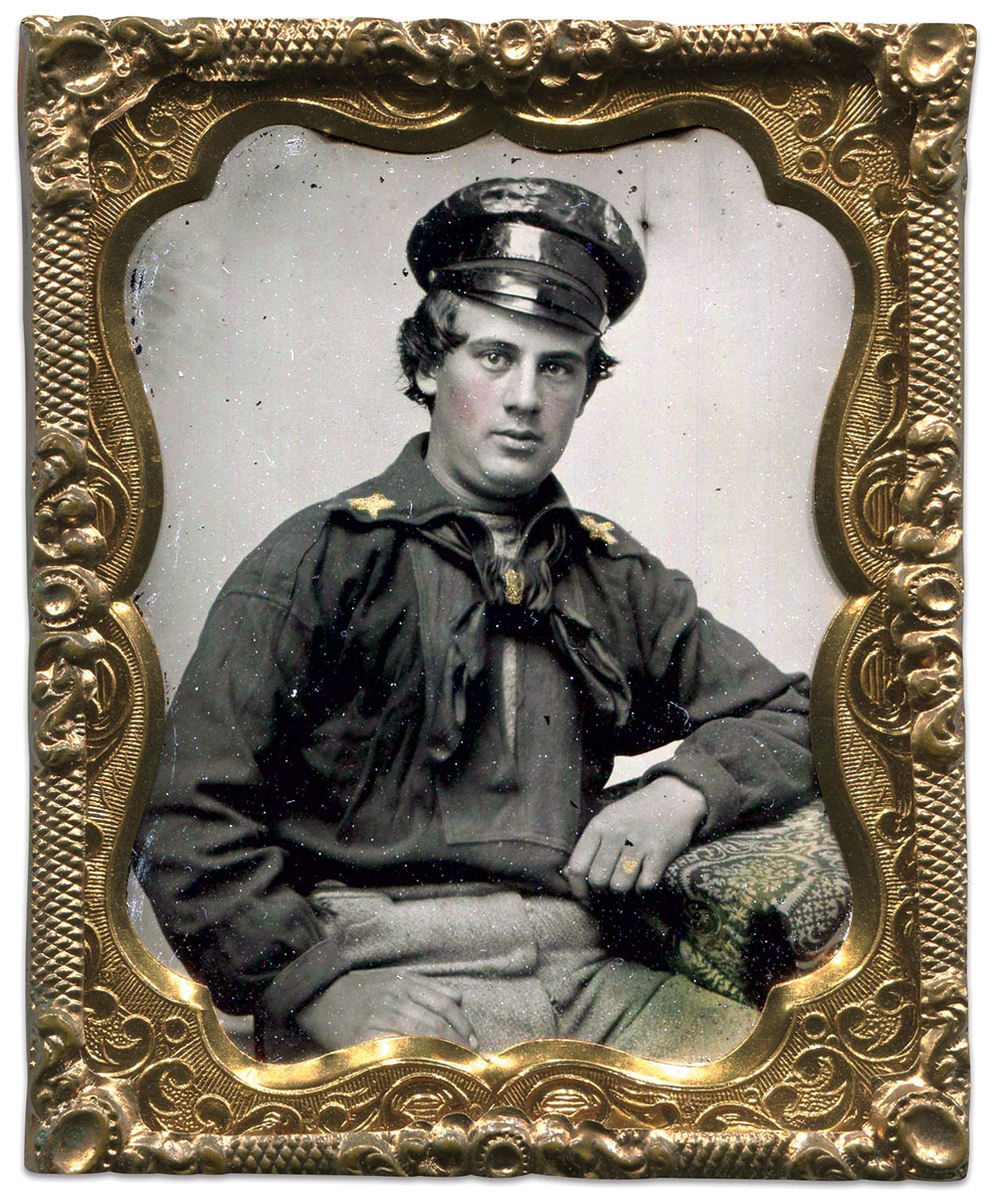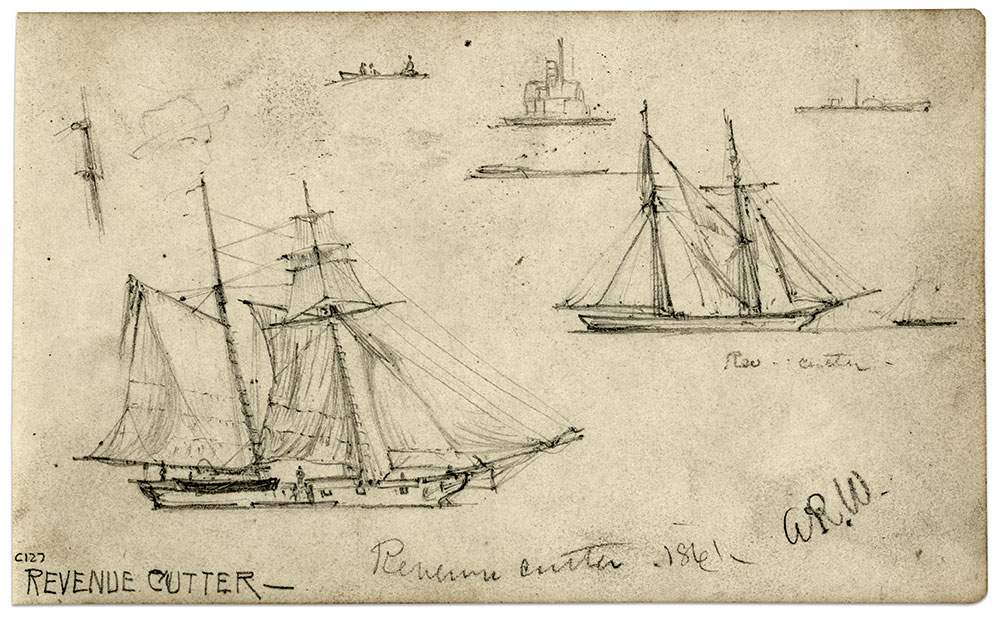By Ron Field
Identified as Joseph White, this seafarer may have served in the antebellum Revenue-Marine Service. He wears an overshirt with large stars on the collar, a black silk handkerchief around his neck and a Pattern 1839 cap with rain cover. His cap and clothing is very similar to that worn in an identified image of Averland Foster, who served in the Service in 1861. It is likely both men wear prewar or early Civil War clothing prescribed for ratings of the Service. This changed during the war years with the issue of new clothing which was more consistent with that of the U.S. Navy.


Established in 1790 as an armed customs enforcement service for the U.S. Treasury Department, at least two of its vessels made headlines during the Civil War. In 1861, the Harriet Lane fired the first naval shot during the bombardment of Fort Sumter. In 1863, Confederate raiders captured the Caleb Cushing in the harbor of Portland, Maine. In 1895, the Service became known as the Revenue Cutter Service and, in 1915, merged with the Life-Saving Service to form the U.S. Coast Guard.
Ron Field is a MI Senior Editor.
SPREAD THE WORD: We encourage you to share this story on social media and elsewhere to educate and raise awareness. If you wish to use any image on this page for another purpose, please request permission.
LEARN MORE about Military Images, America’s only magazine dedicated to showcasing, interpreting and preserving Civil War portrait photography.
VISIT OUR STORE to subscribe, renew a subscription, and more.

